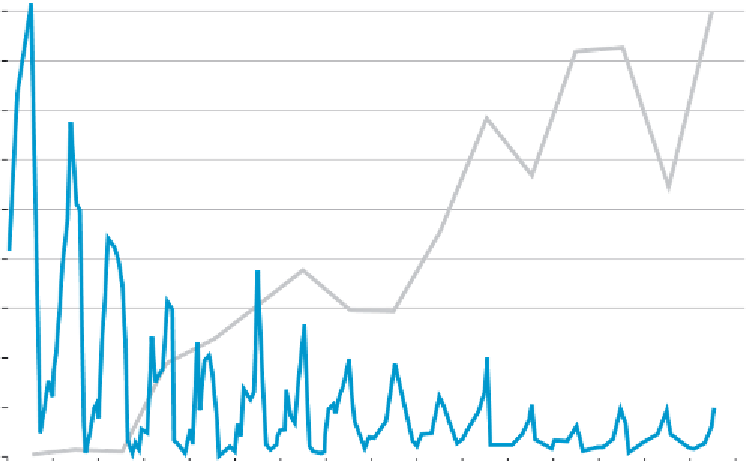Environmental Engineering Reference
In-Depth Information
Understanding the Geology
Fundamental to any study of ARD is an understanding of the geology of the area involved.
Typically a metal-bearing sulphide ore body originates from sulphur-bearing hydrothermal
or epithermal solutions associated with volcanic activity. These liquids and gases follow pre-
ferred paths through the rock, formed by more permeable zones of faulting or fracturing.
Sulphide mineral deposition also tends to be concentrated in these fractures. The composi-
tion and temperature of the l uids determines the metals present and the reactions with the
host rock and solutions encountered, which in turn determine the resulting mineralization.
CASE 17.2
Eagle Mine, Minturn, Colorado, USA
Remediation activities have included: raising the water
level in mine workings by establishing bulk-heads in the main
adits; relocation of mine wastes; capping of the consolidated
tailings storage; construction and operation of a water treat-
ment plant; and interception and diversion of uncontaminated
water. The treatment plant has treated an average of 530
million litres per year, thereby removing about 20 tonnes of
zinc per year that would otherwise enter the Eagle River.
A review of remediation progress carried out in 2000
concluded that health risks had been removed and that
signifi cant progress had been made in restoring the Eagle
River.
The accompanying graph shows the reduction in zinc
levels achieved since commencement of remediation and
the corresponding increase in trout populations. Treatment
is ongoing.
The Eagle Mine, located 13 km southwest of the ski resort
town of Vail in the Rocky Mountains of Colorado, was for
many years a major producer of zinc. Mining of lead/zinc
and copper/silver deposits at the Eagle Mine commenced
toward the end of the nineteenth century and continued
until 1984, when the extensive mine workings were allowed
to fl ood. Subsequently, seepage from the mine began enter-
ing the Eagle River, along with contamination from tailings
storage areas and waste rock dumps. The site was placed
on the US EPA's Superfund list in 1986.
Source: Colorado Dept.of Public Health and Environment
Eagle Mine
Zinc Concentration and Brown Trout Population
Downstream of the Consolidated Tailings Pile
4.00
650
3.60
600
550
3.20
500
2.80
450
2.40
400
350
2.00
300
1.60
250
1.20
200
150
0.80
100
0.40
50
0.00
1989
0
1990
1991
1992
1993
1994
1995
1996
1997
1998
1999
2000
2001
2002
2003
2004
2005
Year













Search WWH ::

Custom Search